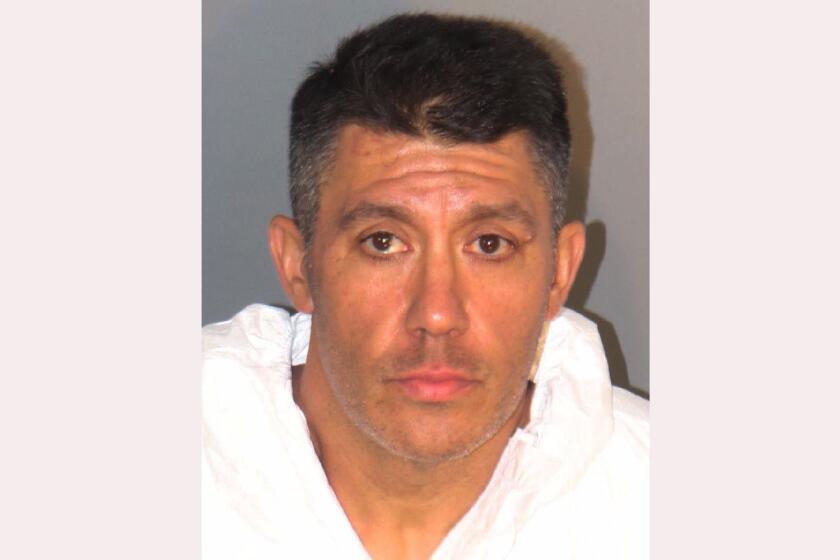Cities, Farms Lose Water to Fisheries
Despite a winter of heavy rain and snowfall across California, state and federal officials announced Monday that many farms and cities should expect drought-like deliveries of water this year, reflecting a historic shift in priorities toward the environment.
For the first time in the history of the federally run Central Valley Project, the largest water delivery system in the state, water once designated for agricultural and urban uses will be diverted for fisheries.
Nearly one in every five gallons supplied by the project will be earmarked for environmental uses, officials said. About 600,000 acre-feet of water--equivalent to a yearly supply for the city of Los Angeles--will be allowed to flow unimpeded through the Sacramento-San Joaquin Delta and into San Francisco Bay to help restore fish and wildlife habitats.
“We are entering a new era in water,” said Tryg Sletteland, spokesman for the Sacramento River Council, one of many environmental groups that pushed for the changes. “For the first time fish and wildlife are being recognized as a legitimate purpose of the project.”
Officials from the U.S. Bureau of Reclamation, which operates the Central Valley Project, blamed the low deliveries to farms and cities in part on the lingering effects of the six-year drought, which has been declared over by local officials in many parts of the state even though state officials refuse to do so until the large reservoirs are full.
Far more important in the long run is the new emphasis on the environment, the officials said. Federal legislation passed last fall and a series of recent regulatory and court rulings favoring environmental uses guarantee that California’s chronic water problems will persist, they said.
“There is a question whether they (farms and cities) will ever again get a full supply of water,” said bureau spokeswoman Lynnette Wirth. “The environment is now a contractor of the Central Valley Project and will be considered on the same basis as the other interests.”
In a series of news conferences around the state Monday, officials also announced below-normal deliveries of water this year from the State Water Project, the second-largest delivery system in California. State officials said cities and farms served by the project--including most of Southern California--should receive 55% of requested supplies.
State officials said the estimate, which had been set at 40%, could increase again if the state receives more rain and snow. They also warned that the new and proposed environmental restrictions on pumping water from the delta could dictate permanent reductions in supplies for cities and farms as more water is set aside to protect fish.
The federal and state projects export water from the delta, which serves as a huge collection basin for rain and melting snowpack from the Sierra Nevada. About two-thirds of Californians get some or all of their drinking water from the delta, an ecologically sensitive estuary that biologists say has been damaged by years of water diversions.
According to the announcement Monday, urban areas served by the Central Valley Project, including Contra Costa County and much of Santa Clara County, should expect about 75% of their requested deliveries this year. Hardest hit will be farmers south of the delta in the San Joaquin Valley, who for the third year in a row may get only 25% of what they wanted, officials said.
The cutbacks should have relatively little effect on cities this year because many have found other sources of water, such as local reservoirs brimming from recent rains, and most have imposed conservation measures to allow them to get by with less.
For the Metropolitan Water District, a water wholesaler that provides about half the water in Southern California, even 55% of state water would be enough to begin refilling ground water basins depleted during the drought, said Duane Georgeson, MWD assistant manager.
“Thankfully, we have been blessed with good rains this year,” Georgeson said.
But for many farmers in the six-county area of the southern San Joaquin Valley, there is no other dependable water source. Some farmers have tapped ground water supplies dry, meaning that another year of reduced water project deliveries could put them out of business, according to several farm groups.
“This is going to hit the valley very hard,” said Phil Larson, a farmer and agricultural pest control consultant in San Joaquin. “This year we are at 18% unemployment. We can’t take much more.”
Jean Sagouspe, president of the Central Valley Project Water Assn., which represents irrigation districts that contract for federal water, said agriculture is being unfairly singled out by the Bureau of Reclamation. Sagouspe acknowledged that some cuts are necessary, but said cities and fisheries should be required to bear an equal burden.
“We need to fix the environmental problems in the delta, but you don’t do that by just taking water from agriculture and letting it run into the ocean,” Sagouspe said. “Agriculture is being made the fall guy here and that is not fair.”
Environmentalists said the reduction in water supplies to agriculture is long overdue. Farmers usually received about 90% of the Central Valley Project water, an amount environmentalists say cannot be justified during times of water scarcity.
“They have had this coming for a long time,” Sletteland said. “They are going to have to learn to farm with less water. It is as simple as that.”
More to Read
Sign up for Essential California
The most important California stories and recommendations in your inbox every morning.
You may occasionally receive promotional content from the Los Angeles Times.










